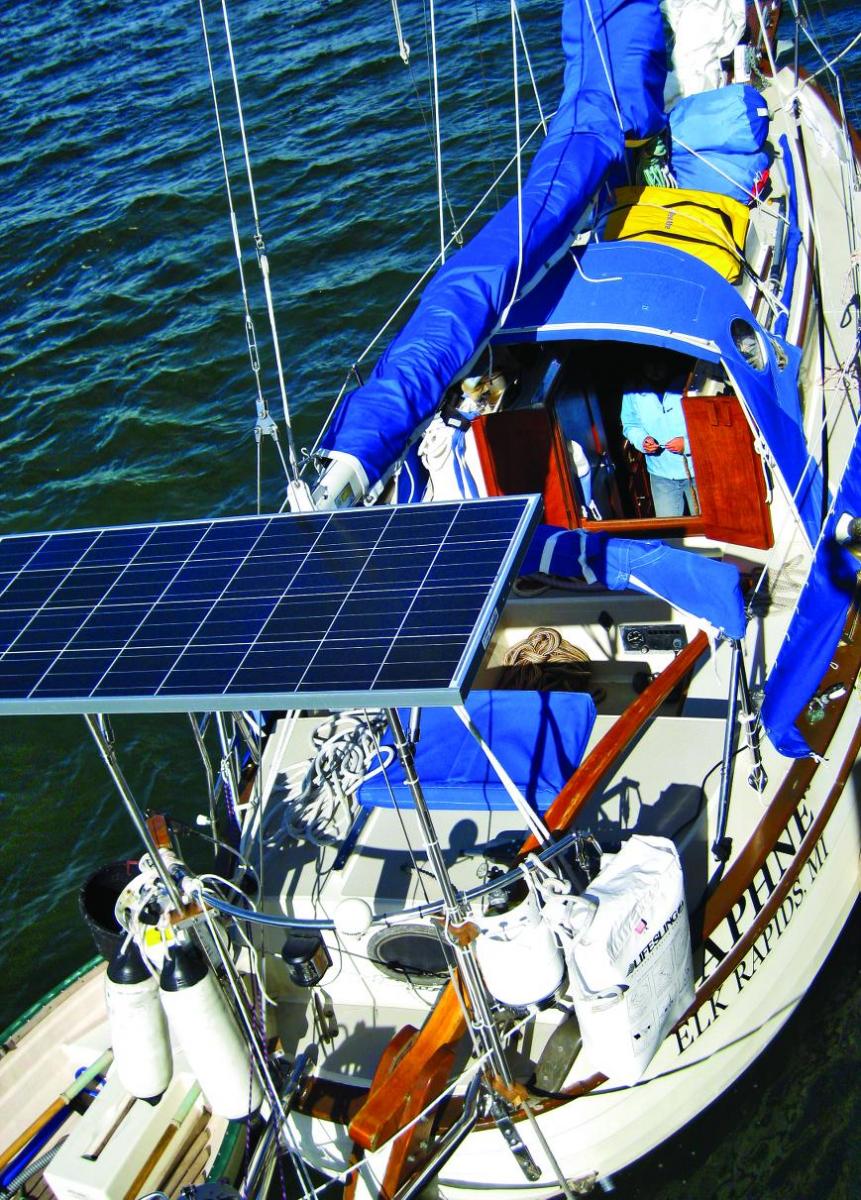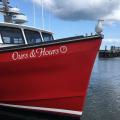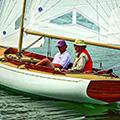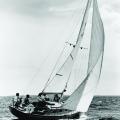Right-Sized Boating
Somewhere there sails a smaller vessel

Voyaging on a boat is a good metaphor for the voyage of life. Stowage space is minimal, requiring the distilling down of possessions to only the most important. Things that break easily, have no useful purpose, or have to be carefully handled are left behind. The same principle that applies to possessions also applies to relationships and activities. For activities this means clearing out the meaningless hustle and bustle, and living only with the most enriching endeavors. When applied to relationships, what remains are the closest mates—those whose friendship is resilient and whose love is able to withstand much wear.
When I moved aboard Daphne, my 27-foot Nor’Sea 27 sailboat, I saved a few nooks and crannies to carefully position trinkets of warmth and mementoes of home. Even the 19th-century explorer Ernest Shackleton, when he had to abandon his vessel and set out on foot across brutal Arctic ice, commanded his crew to schlep the ship’s guitar and Bible. For survival, he knew the crew needed joy and, most importantly, hope.
I was not crossing the Arctic on foot, so I didn’t need to decide if there was room for a cook pot or a pair of shoes—on my boat I could have both. But I did have to limit how many cook pots and how many pairs of shoes I could carry. To be exact, aboard Daphne, I had four pairs of shoes: running sneakers, sea boots, sandals, and winter casual shoes. I had only two pots: a saucepan and a spaghetti pot. I had six T-shirts, two pairs of jeans, nine books, four spare fuel filters, and one set of watercolors, along with some other stuff.

In 2008, when I purchased Daphne at the time of the economic downturn, right-sized living was becoming a hot topic in the news and on the Internet. The concept had many names: voluntary simplicity, simple living, tiny homes, minimalism. How do you decide what is the right size? What is too big, too small?
One popular blogger proposed the “100 Things Challenge,” a call to people to pare down their personal belongings to only 100 things. I couldn’t do that, nor did I want to try. Once I started counting I quickly reached the max. Are four pairs of shoes four things, or eight? Does a box of crayons count as 24 because it includes two dozen colors? I decided counting was not a worthwhile approach to defining the right size for my life.
Then there are physical measurements. Some in the tiny home movement argue that a home is only tiny if it is less than 400 square feet. While Daphne most certainly fit those parameters, my “home” expanded beyond the hull as well. My shower was at the local gym and my extra storage closet was the trunk of my car. Even on board Daphne, the walls of my home were as far away as the horizon on a sunny day. So the limits of 100 things, or 100 square feet didn’t apply in my case.
Still, like the economic law of diminishing returns, there is a maximum amount of belongings a person can own before any more would be a hindrance, not a benefit. This idea is repeated in the biological idea of carrying capacity for a species or ecosystem. Daphne had a carrying capacity. To pack her full beyond that limit became too much, and my stuff became more burdensome than it was worth. There is a practical aspect to this. Tightly packed lockers that can’t breathe encourage mildew and make retrieving things a chore. A few extra feet in length might help with additional storage, but the cost of maintenance in time and money wasn’t worth it. Daphne was neither so small that I felt limited or uncomfortable, nor so big that I couldn’t manage sailing and caring for her on my own. When I was cold, I had a sweater. When I was tired, a pillow. Lonely, a kitty. When it was dark, as it usually was under the canvas cover in the winter season, I had a flashlight.
 Photo by Teresa Carey
Photo by Teresa Carey
Daphne was the right size for me—small enough to know that Poseidon would test the heart as he will, and utilitarian enough to require baths be taken overboard. Small boat, big adventures; small space, big life.
Why be restricted by numerical measures? Would 101 things mean you aren’t a minimalist? Is a 405-square-foot home not tiny? Right-sized living is a personal matter. There exists no set metric for how big, how much, or how many. The reasons why people own and enjoy pocket-cruiser boats and tiny homes are as diverse as the owners themselves. One cannot use numbers to determine whether someone is living right or is a showboater. Rather, the conscious exercise of holding less, having less, desiring less is what leads to needing less. The effort to strip away excess and thrive with the fundamentals will differ from one individual to the next. There is no golden mean alerting us to when we may have strayed from such a set of supposed ideals. Daphne’s design, with a table that converts into a sleeping berth, creates space for sleeping, dining, cooking, and a bathroom all within arm’s reach. Solar panels power the small icebox and few electronics, and Dory the cat offers companionship. Photos by Ben Carey (3)
Daphne’s design, with a table that converts into a sleeping berth, creates space for sleeping, dining, cooking, and a bathroom all within arm’s reach. Solar panels power the small icebox and few electronics, and Dory the cat offers companionship. Photos by Ben Carey (3)
One can sleep in an open rowboat with a leaky tarp for protection, or make a bed out of an open canoe, or even build up a staunch mound of snow for shelter. I’ve been there, and enjoy those challenges. I can understand the beauty and authenticity offered by that way of life. But, after these adventures I’ve always returned to a home with a proper bed and a hot shower awaiting me. That is until I moved aboard Daphne. I did not need less to understand the beauty of less. And yet I continue to wonder what lies over the horizon of that so-called minimalist life.
I lived aboard Daphne for almost three years. During that time I traveled the entire eastern seaboard from Maine to Florida and the Bahamas, and back to Maine. I took on waitressing, tutoring, cleaning, or sailing jobs to maintain my lifestyle. But I always knew that it
couldn’t last forever. Daphne was the right size for me at that time. Lives and goals change and I knew that someday I would need a larger space. Not because I wanted more stuff or more luxury (which is the reason most minimalists attribute to large homes) but because Daphne wouldn’t always suit my needs. The need for family, companionship, a meaningful career, safety, all are essential for a healthy life.
Sailing Daphne was an important time because it allowed me to experience small and appreciate small so I could understand what size is my “right size.” I now sail a 44-foot boat—17 feet longer than my first floating home. Despite her larger size, I still conserve water, treasure my few things, and make it a priority to get outside every day. A larger vessel was required because I wanted to train new sailors aboard my boat and needed space aboard for them.
The values I learned from small living remain—that minimalism, tiny, or right-sized is always and only a process. Daphne could be half her length for this comparison and I still wouldn’t call her a tiny home or myself a minimalist. Somewhere there drifts a smaller boat and always a lighter way to pack it.
Teresa L. Carey is a filmmaker, writer, and ocean advocate. You can find more of her work at TeresaCarey.com.
Related Articles
Share this article:
2023 Maine Boat & Home Show

Join Us for the Maine Boat & Home Show!
Art, Artisans, Food, Fun & Boats, Boats, Boats
August 11 - 13, 2023 | On the waterfront, Rockland, Maine
Click here to pre-order your tickets.
Show is produced by Maine Boats, Homes & Harbors magazine.















